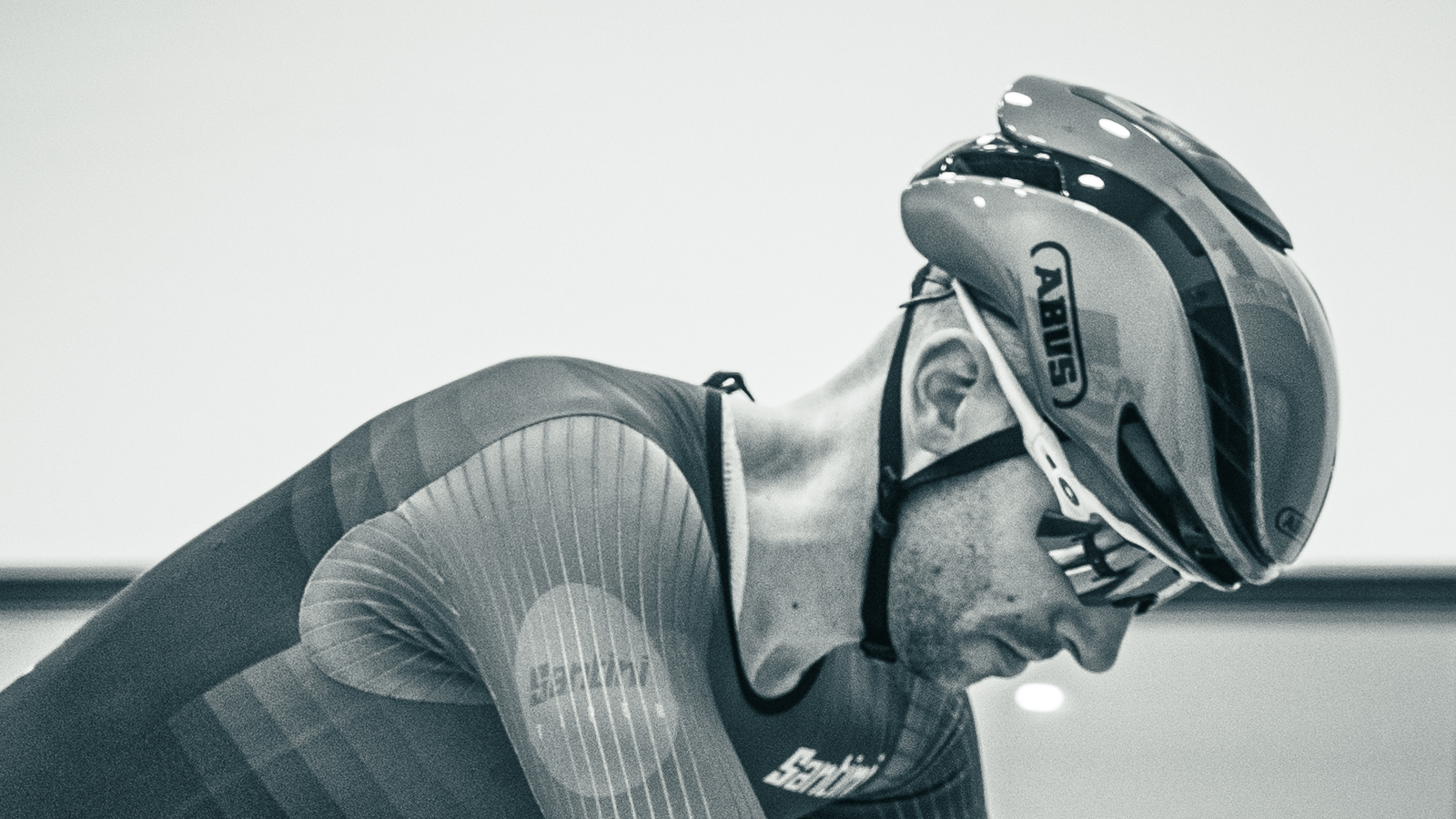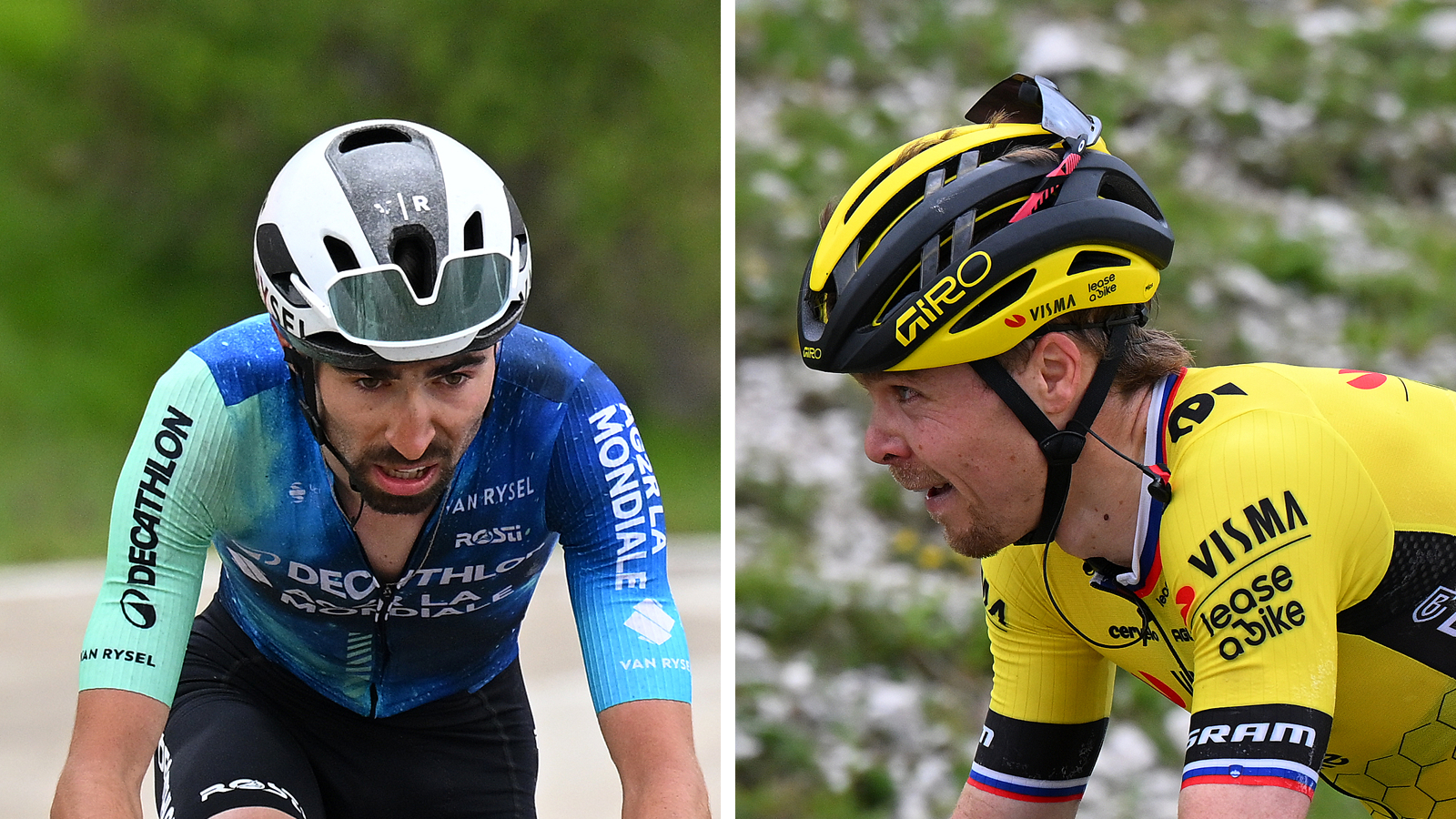
When you remove your sunglasses, what do you do with them? 95% of us, including pro riders Valentin Paret-Peintre and Jan Tratnik, will slot them somewhere into the vents of our helmets, but I'm here to tell you that you shouldn't.
I'm just as guilty for it as the next person, and I get it. You've been riding for two hours, the heat of the day is becoming stifling, and despite the best cycling glasses weighing little more than a feather or two, you're feeling claustrophobic behind their gargantuan lenses.
We've all been there, maybe you're riding up a climb and the slower speed of the onrushing air is struggling to offset the heat you're producing through your effort. Maybe you're running dark lenses and a cloud just switched off the lights like an electricity meter running out of credit. Maybe you're at Wednesday Night Worlds (aka your local evening crit / chaingang) and the setting sun is winning the race.
Whatever your scenario, there are plenty of valid reasons to remove your sunglasses while riding. Brands know this, and pretty much every helmet on the market has an element of eyewear storage worked into its design.
Some brands target it specifically, such as the Lazer Vento Kineticore with its dedicated eyewear dock, or the Specialized Search gravel helmet's inbuilt grippers that keep them secure no matter the terrain. So secure, in fact, that you have to arm wrestle a troll and say the magic word to get them back when you want them (this might be an exaggeration).
Others are a little more passive, and simply ensure that the front vents are positioned in a way that plays nicely with your Oakleys or your 100 Percents (other sunglasses brands are available).
But if you care about aerodynamics, don't do it.
Cyclingnews subscribers will know that we recently went to the Silverstone Sports Engineering hub, and wind tunnel tested 24 helmets to find out which, empirically, was the best aero helmet on the market today in terms of outright aero performance. That's not all we did though: with a bit of spare time at the end of our allotted slot, we wanted to quantify how many watts you give away by doing this:

We ran three tests, using the Van Rysel FCR Aero helmet – No favours or scientific logic here, it was just the helmet that Tom was wearing at the end of our test, because of alphabetical order – and his pair of Oakley Radar sunglasses.
We ran the standard test with the glasses, then a test without them, and then a test with them in the front vents.
We chose to avoid testing them slotted into the back of the helmet, because we had slight concerns that they'd be blown rearwards into the very expensive fans never to be seen again, presumably with a hefty repair bill that would take some uncomfortable explaining to the bosses. By way of a tangent, this happened to me in a race once, and somehow despite bouncing through a peloton of amateurs and a caravan of support cars, my Oakley Jawbreakers lived to tell the tale without a single scratch.
Anyway, enough about me. Each test was standardised using the same rider (our resident mannequin Tom Wieckowski), using the same kit, bike and helmet. The wind tunnel went through a taring process prior to each run, and each helmet was tested at four yaw angles (0, 5, 10 and 15 degrees). We will provide the average Coefficient of Drag x Area (CdA) across the four, and then calculate that into watts saved and time saved.
The results are as follows:
CdA: 0.3531
Watts at 40km/h: 290.62
Time over 40km at 250 watts: 1:03:05
CdA: 0.3542
Watts at 40km/h: 291.52
Time over 40km at 250 watts: 1:03:09
CdA: 0.3584
Watts at 40km/h: 294.98
Time over 40km at 250 watts: 1:03:24
According to our tests, wearing your sunglasses in the vents of your helmet can cost you 4.36 watts at 40km/h. Bump that speed up to 50km/h and you stand to lose even more at 8.52 watts. Of course, that's compared to wearing them, and if you're putting them in the vent of your helmet, it's safe to assume you want them off. Removing them from the equation altogether is still slightly slower than wearing them, but when compared to putting them in your vents, you stand to save 3.46 watts.
It might not sound enormous, but given that it won't cost you a single cent / penny, it's the best value aero gain we can think of.
In our full list of helmets, the Van Rysel FCR helmet came 5th, without sunglasses, its result would drop it to 8th. Once you slot the glasses into your helmet vents, it drops to a disappointing 19th, only a single position above the £20.00 Carnac Evo Road helmet.
If you were to race a 40km time trial at 250 watts, you could save yourself 15 seconds by simply putting your sunglasses somewhere else. Given that just yesterday, Specialized launched a limited edition wheelset that claimed to save you a single second over 40km, we think we're justified in bringing this one to the public's attention.
That's not all though. As outlined at the beginning, one of the main reasons to remove sunglasses is due to feeling hot. But when you stuff your sunglasses into your helmet vents, you're effectively blocking off the airflow into (or out of) the helmet, preventing the inrush of cool air or the exhaust of hot air. It might feel as though you're getting more airflow because you can feel it on your face, but there's every chance you're actually making things worse.
If nothing else, you're prolonging the time to the top of the hill.
Sign up to Cyclingnews and nerd out in the data of our full wind tunnel helmet test to see which is fastest, which is slowest, and how your helmet stacks up against the competition.







